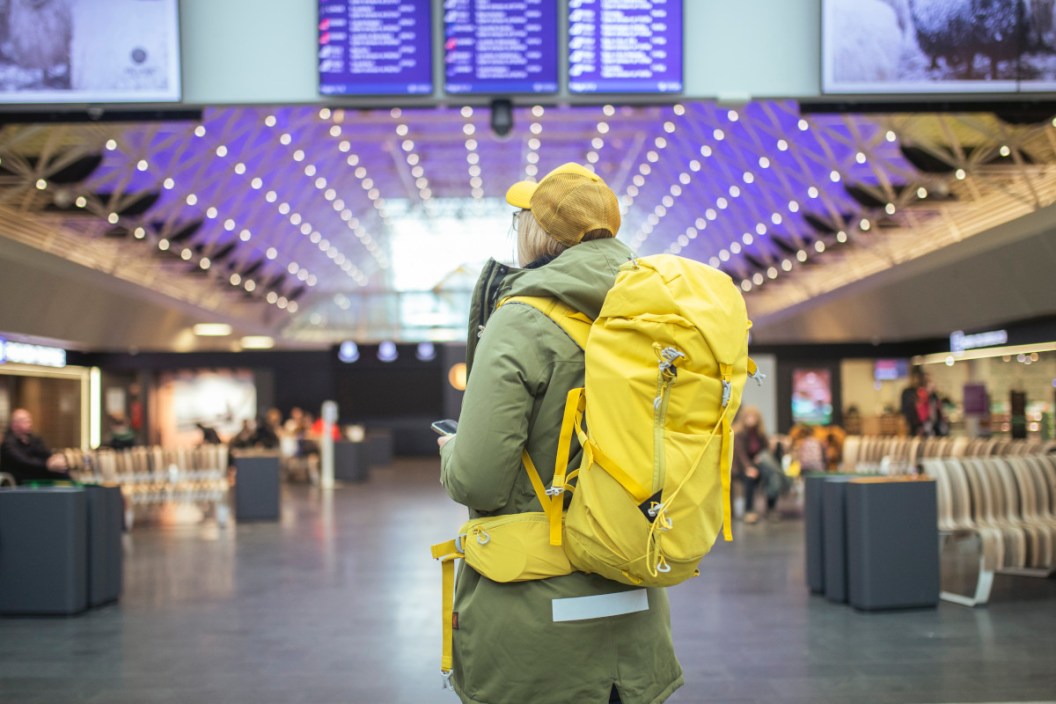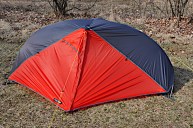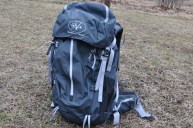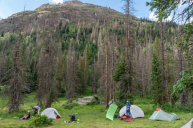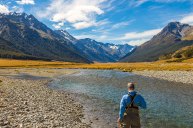When most people think of a camping trip, they most likely do not imagine a plane trip as part of the equation. Many people restrict their camping destinations to places close to home where they can easily drive to the campground or backcountry and start their outdoor adventure. However, if you're planning a trip far from home, it's often easier and less time consuming to fly there, especially if it's a once-in-a-lifetime trip to a National Park or extremely remote area of the globe.
We all know what a hassle air travel can be because of the Transportation Security Administration (TSA)'s restrictions and security measures. I think we're all a little tired of removing our footwear and belts every time we go through security by now. But flying with camping gear opens a whole new can of worms, because certain outdoor gear falls under all sorts of restrictions.
Don't worry, we're here to help. We've done the necessary homework to tell you what camping gear you can and cannot bring with you on a plane. By following these guidelines, it should help you avoid any unpleasant encounters with a TSA officer, wasted time or effort, and general unpreparedness.
Completely Prohibited Items for Airplanes
Taking outdoor gear on a plane can be intimidating the first time you do it, but the rules are rather simple. We'll simplify it a bit here by listing the things you cannot take on a plane under any circumstances. We went directly to the TSA website to look over their extensive lists of what sporting and camping equipment is allowed. We were pleasantly surprised by what can be taken onboard in both checked baggage and carry-on bags. However, there are a few items which are flat out prohibited no matter what.
Most of the restrictions are going to affect your camp cooking gear. More specifically, things like stove fuel won't be allowed on a plane. If you're planning a big backpacking trip deep in the wilderness, campers might need to find a retail store after landing and purchase some of these items upon arrival.
Here's what you cannot take on a plane, in checked or carry-on luggage:
- Lighter fluid
- Propane
- Strike-anywhere matches
- Torch lighters
- Butane
- Cooking spray
- Flammable liquids and gels
- Flares and flare guns
- Bear Bangers
- Bear Spray
Fortunately, most of these items are readily available in most areas where camping is already popular. In fact, some areas offer bear spray rentals to hikers and campers who are concerned about protecting themselves from bears and other wild animals. Some areas will even rent complete camping gear kits if they are popular enough, which is one way to pack light and save yourself some trouble going through security.
Items Restricted to Checked Luggage
Many are surprised by how short the list of prohibited items is when it comes to items used for camping. What many people do not realize is the bevy of items you can bring on a plane so long as they are confined to checked bags. This does create an extra headache if you wanted to avoid checking your bags. However, if you're planning a big trip into the wilderness with a large pack and backpacking gear, odds are you're going to be over the size limits and weight restrictions for carry-on luggage anyway. That means you may have no choice other than to check your gear.
Most of the items on the checked baggage list are things TSA is concerned can be used as weapons, which is why they're not allowed in the passenger cabin. Most of these should be obvious.
- Axes and Hatchets
- Knives
- Swiss Army and Pocket Knives
- Saws
- Aerosol Insecticides (not labeled as hazardous)
- Cast Iron Cookware
- Hiking Poles, Trekking Poles, or Walking Sticks
- Shoe or Snow Spikes
- Snow Cleats
- Tent Spikes and Poles
- Hammer or Mallet
- Multi-Tools with Blades
- Camp Stove
Note that tent spikes and tent poles have a prominent spot on this list. Most airlines allow tents in carry-on bags, but odds are the tent is going to be packed with spikes and poles, so you might as well check it.
There are some unique items that are only allowed in checked bags. For instance, meals ready to eat, MREs with a self-heating element are not usually allowed in carry-ons and must be checked. Pots and pans are usually fine in carry-on luggage unless they're cast iron.
Another key thing to remember is TSA requires all tools longer than seven inches to be in checked luggage. They also request anyone bringing camp stoves make sure they are empty of fuel. You must also clean them to ensure there is no leftover residue or vapors. So long as you leave the fuel at home, you should have no issues bringing your cooking equipment along.
Items That Can Be Packed in Carry-On Luggage
The items on this final list can all be packed in carry-on luggage. Although as we've already noted, assuming you're carrying all your gear in one bag, odds are you're going to need to check it anyway. It is possible to pack extremely light if you're really roughing it, too. In any case, most of these items are also good for being checked with a few minor exceptions we'll point out later.
- Air mattress (with built-in pump)
- Camp Stoves (empty of fuel)
- Safety Matches
- Lighters
- GPS Units
- Rope
- Fishing Lures
- Snowshoes
- Vacuum Sealed Bags
- Binoculars
- Sleeping Bags
- Utensils (short, plastic, or round-bladed butter knives only in carry-on)
We should note the TSA suggests you check with the airline you're flying with if you are using an emergency position indicating radio beacon for your trip. It may or may not be allowed. They have a similar recommendation for solar panels, so if you're planning to take a small one to keep your phone charged, best to check ahead of time. TSA allows portable power banks with lithium ion batteries in carry-on bags only.
Speaking of electronics and batteries, TSA limits batteries to a rating of 100-watt hours per battery. This leaves out some portable power stations from consideration. Check your device before you go, because the last thing you want to do is get to the airport and find out your power source isn't allowed on the plane.
Other Considerations When Flying With Camping Gear
If you are checking any luggage, it pays to be cognizant of more fragile camping items. The airlines can be rough with luggage. If you're not careful in how you pack, you may end up with bent tent poles or other damaged equipment. Most camping stuff is built to be rugged, but it pays to be cautious just the same. Pack delicate items in clothing to help cushion them.
Another thing to consider with traditional hiking and camping backpacks is all the extra straps, bungees, and cords that are usually on the outside of the bag. These things can catch on the usual airport luggage-moving equipment like rollers or the carousel at baggage claim. There's a chance your bag or straps can get damaged in the process. We've heard of worst-case scenarios where bags were destroyed or their contents were ruined. It's not going to be possible with every bag, but for most ultralight bags, a good solution is to get a large duffel bag designed for air travel. Pack your hiking and camping pack inside the duffel and it eliminates those worries.
Another alternative is to place your pack inside a larger piece of luggage designed for air travel. This option works well if you're car camping, but less well if you're roughing it in the backcountry for some primitive camping. We've also heard of campers using garbage bags to keep all those loose straps contained while the loading crews are handling your gear.
Yet a third option we've heard about is gate checking your bag. If you have an over-sized bag that's too big for carrying on the plane, you can usually take it to the attendant at the gate and have them check it from there. The plus side to doing this is your bag will usually be available as soon as you get off the plane. Alternatively, they will inform you when you land if your bag is being sent to the baggage area instead.
Flying with camping gear opens a bevy of new opportunities for campers. One simply needs to give it a try. Once you've done it a few times, it becomes easy to expand your camping adventures.
For more outdoor content from Travis Smola, be sure to follow him on Twitter and Instagram For original videos, check out his Geocaching and Outdoors with Travis YouTube channels.
